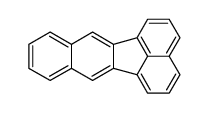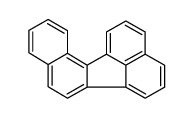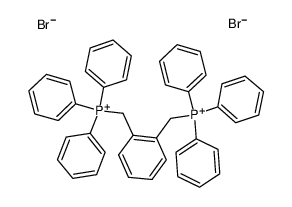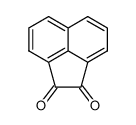1.Identification
1.1 GHS Product identifier
| Product name | benzo[k]fluoranthene |
|---|
1.2 Other means of identification
| Product number | - |
|---|---|
| Other names | Benzo<k>fluoranthene |
1.3 Recommended use of the chemical and restrictions on use
| Identified uses | For industry use only. |
|---|---|
| Uses advised against | no data available |
1.4 Supplier's details
| Company | MOLBASE (Shanghai) Biotechnology Co., Ltd. |
|---|---|
| Address | Floor 4 & 5, Building 12, No. 1001 North Qinzhou Road, Xuhui District, Shanghai, China |
| Telephone | +86(21)64956998 |
| Fax | +86(21)54365166 |
1.5 Emergency phone number
| Emergency phone number | +86-400-6021-666 |
|---|---|
| Service hours | Monday to Friday, 9am-5pm (Standard time zone: UTC/GMT +8 hours). |
2.Hazard identification
2.1 Classification of the substance or mixture
Carcinogenicity, Category 1B
Hazardous to the aquatic environment, short-term (Acute) - Category Acute 1
Hazardous to the aquatic environment, long-term (Chronic) - Category Chronic 1
2.2 GHS label elements, including precautionary statements
| Pictogram(s) |   |
|---|---|
| Signal word | Danger |
| Hazard statement(s) | H350 May cause cancer H410 Very toxic to aquatic life with long lasting effects |
| Precautionary statement(s) | |
| Prevention | P201 Obtain special instructions before use. P202 Do not handle until all safety precautions have been read and understood. P280 Wear protective gloves/protective clothing/eye protection/face protection. P273 Avoid release to the environment. |
| Response | P308+P313 IF exposed or concerned: Get medical advice/ attention. P391 Collect spillage. |
| Storage | P405 Store locked up. |
| Disposal | P501 Dispose of contents/container to ... |
2.3 Other hazards which do not result in classification
none
3.Composition/information on ingredients
3.1 Substances
| Chemical name | Common names and synonyms | CAS number | EC number | Concentration |
|---|---|---|---|---|
| benzo[k]fluoranthene | benzo[k]fluoranthene | 207-08-9 | none | 100% |
4.First-aid measures
4.1 Description of necessary first-aid measures
General advice
Consult a physician. Show this safety data sheet to the doctor in attendance.
If inhaled
Fresh air, rest.
In case of skin contact
Remove contaminated clothes. Rinse and then wash skin with water and soap.
In case of eye contact
First rinse with plenty of water for several minutes (remove contact lenses if easily possible), then refer for medical attention.
If swallowed
Rinse mouth. Refer for medical attention .
4.2 Most important symptoms/effects, acute and delayed
ACUTE/CHRONIC HAZARDS: When heated to decomposition this compound emits acrid smoke and irritating fumes.
4.3 Indication of immediate medical attention and special treatment needed, if necessary
Immediate first aid: Ensure that adequate decontamination has been carried out. If patient is not breathing, start artificial respiration, preferably with a demand valve resuscitator, bag-valve-mask device, or pocket mask, as trained. Perform CPR if necessary. Immediately flush contaminated eyes with gently flowing water. Do not induce vomiting. If vomiting occurs, lean patient forward or place on the left side (head-down position, if possible) to maintain an open airway and prevent aspiration. Keep patient quiet and maintain normal body temperature. Obtain medical attention. /Aromatic hydrocarbons and related compounds/
5.Fire-fighting measures
5.1 Extinguishing media
Suitable extinguishing media
Suitable extinguishing media: Use water spray, alcohol-resistant foam, dry chemical, or carbon dioxide.[Sigma-Aldrich; Safety Data Sheet for Benzo
5.2 Specific hazards arising from the chemical
Flash point data for this chemical are not available; however, it is probably combustible.
5.3 Special protective actions for fire-fighters
Wear self-contained breathing apparatus for firefighting if necessary.
6.Accidental release measures
6.1 Personal precautions, protective equipment and emergency procedures
Use personal protective equipment. Avoid dust formation. Avoid breathing vapours, mist or gas. Ensure adequate ventilation. Evacuate personnel to safe areas. Avoid breathing dust. For personal protection see section 8.
6.2 Environmental precautions
Sweep spilled substance into covered containers. If appropriate, moisten first to prevent dusting. Carefully collect remainder. Then store and dispose of according to local regulations. Do NOT let this chemical enter the environment.
6.3 Methods and materials for containment and cleaning up
ACCIDENTAL RELEASE MEASURES: Personal precautions, protective equipment and emergency procedures: Use personal protective equipment. Avoid dust formation. Avoid breathing vapors, mist or gas. Ensure adequate ventilation. Evacuate personnel to safe areas. Avoid breathing dust. Environmental precautions: Prevent further leakage or spillage if safe to do so. Do not let product enter drains. Discharge into the environment must be avoided. Methods and materials for containment and cleaning up: Pick up and arrange disposal without creating dust. Sweep up and shovel. Keep in suitable, closed containers for disposal.[Sigma-Aldrich; Safety Data Sheet for Benzo
7.Handling and storage
7.1 Precautions for safe handling
Avoid contact with skin and eyes. Avoid formation of dust and aerosols. Avoid exposure - obtain special instructions before use.Provide appropriate exhaust ventilation at places where dust is formed. For precautions see section 2.2.
7.2 Conditions for safe storage, including any incompatibilities
Provision to contain effluent from fire extinguishing. Well closed.Keep container tightly closed in a dry and well-ventilated place. Recommended storage temperature 2 - 8°C. Storage class (TRGS 510): Non-combustible, acute toxic Cat.3 / toxic hazardous materials or hazardous materials causing chronic effects.[Sigma-Aldrich; Safety Data Sheet for Benzo
8.Exposure controls/personal protection
8.1 Control parameters
Occupational Exposure limit values
Recommended Exposure Limit: 10 Hr Time-Weighted Avg: 0.1 mg/cu m (cyclohexane-extractable fraction). /Coal tar pitch volatiles/
NIOSH considers coal tar pitch volatiles to be potential occupational carcinogens. NIOSH usually recommends that occupational exposures to carcinogens be limited to the lowest feasible concentration. /Coal tar pitch volatiles/
Biological limit values
no data available
8.2 Appropriate engineering controls
Handle in accordance with good industrial hygiene and safety practice. Wash hands before breaks and at the end of workday.
8.3 Individual protection measures, such as personal protective equipment (PPE)
Eye/face protection
Safety glasses with side-shields conforming to EN166. Use equipment for eye protection tested and approved under appropriate government standards such as NIOSH (US) or EN 166(EU).
Skin protection
Wear impervious clothing. The type of protective equipment must be selected according to the concentration and amount of the dangerous substance at the specific workplace. Handle with gloves. Gloves must be inspected prior to use. Use proper glove removal technique(without touching glove's outer surface) to avoid skin contact with this product. Dispose of contaminated gloves after use in accordance with applicable laws and good laboratory practices. Wash and dry hands. The selected protective gloves have to satisfy the specifications of EU Directive 89/686/EEC and the standard EN 374 derived from it.
Respiratory protection
Wear dust mask when handling large quantities.
Thermal hazards
no data available
9.Physical and chemical properties
| Physical state | YELLOW CRYSTALS |
|---|---|
| Colour | Yellow prisms from hexane or acetic acid |
| Odour | no data available |
| Melting point/ freezing point | 215-217ºC(lit.) |
| Boiling point or initial boiling point and boiling range | 480ºC |
| Flammability | no data available |
| Lower and upper explosion limit / flammability limit | no data available |
| Flash point | -17°C |
| Auto-ignition temperature | no data available |
| Decomposition temperature | no data available |
| pH | no data available |
| Kinematic viscosity | no data available |
| Solubility | less than 1 mg/mL at 20°C |
| Partition coefficient n-octanol/water (log value) | log Kow = 6.11 |
| Vapour pressure | 9.59e-11 mm Hg at 25°C |
| Density and/or relative density | 1.286 g/cm3 |
| Relative vapour density | no data available |
| Particle characteristics | no data available |
10.Stability and reactivity
10.1 Reactivity
no data available
10.2 Chemical stability
Stable under recommended storage conditions.[Sigma-Aldrich; Safety Data Sheet for Benzo
10.3 Possibility of hazardous reactions
/Benzo(b)fluoranthene/ is combustible.BENZO[K]FLUORANTHENE can react with strong oxidizing agents. May react with electrophiles, peroxides, nitrogen oxides and sulfur oxides
10.4 Conditions to avoid
no data available
10.5 Incompatible materials
Incompatible materials: Strong oxidizing agents.[Sigma-Aldrich; Safety Data Sheet for Benzo
10.6 Hazardous decomposition products
Hazardous decomposition products formed under fire conditions - Carbon oxides.[Sigma-Aldrich; Safety Data Sheet for Benzo
11.Toxicological information
Acute toxicity
- Oral: no data available
- Inhalation: no data available
- Dermal: no data available
Skin corrosion/irritation
no data available
Serious eye damage/irritation
no data available
Respiratory or skin sensitization
no data available
Germ cell mutagenicity
no data available
Carcinogenicity
CLASSIFICATION: B2; probable human carcinogen. BASIS FOR CLASSIFICATION: Based on no human data and sufficient data from animal bioassays. Benzo[k]fluoranthene produced tumors after lung implantation in mice and when administered with a promoting agent in skin-painting studies. Equivocal results have been found in a lung adenoma assay in mice. Benzo[k]fluoranthene is mutagenic in bacteria. HUMAN CARCINOGENICITY DATA: None. ANIMAL CARCINOGENICITY DATA: Sufficient.
Reproductive toxicity
no data available
STOT-single exposure
no data available
STOT-repeated exposure
no data available
Aspiration hazard
no data available
12.Ecological information
12.1 Toxicity
- Toxicity to fish: no data available
- Toxicity to daphnia and other aquatic invertebrates: no data available
- Toxicity to algae: no data available
- Toxicity to microorganisms: no data available
12.2 Persistence and degradability
AEROBIC: In a static biodegradability test employing a domestic wastewater inoculum, 50-70% of benzo(k)fluoranthene was degraded in four successive weekly subcultures(1). After 60 days of batch slurry bioremediation, the initial solid-phase benzo(b,k)fluoranthene concentration of 120 ug/g was reduced to 50.4 ug/g, a 58% removal(2). In shake flask studies, an initial benzo(b,k)fluoranthene concentration of 2.9 ug/mL was reduced to 1.7 ug/mL following 2 weeks incubation in contaminated groundwater from the American Creosote Works Superfund site, Pensacola, FL; the concentration in a sterile control was 2.8 ug/mL(3). In bench-scale biotreatability studies using a solid-phase bioremediation process (landfarming chambers containing sediment and soil collected from the American Creosote Works Superfund site, Pensacola, FL), the benzo(b,k)fluoranthene concentration was reduced from 112.8 to 109.8 mg/landfarming chamber in unamended surface soil; 112.8 to 81.3 mg/landfarming chamber in nutrient-amended surface soil; 418.8 to 345.6 mg/landfarming chamber in unamended sediment; and 418.7 to 351.6 mg/landfarming chamber in nutrient-amended sediment following 12 weeks incubation(4).
12.3 Bioaccumulative potential
An estimated BCF range of 3415-6465 was calculated in fish for benzo(k)fluoranthene(SRC), using a log Kow range of 5.86-6.28(1) and a regression-derived equation(2). According to a classification scheme(3), this BCF range suggests that the potential of benzo(k)fluoranthene for bioconcentration in aquatic organisms is very high(SRC). Polyaromatic hydrocarbons, including benzo(k)fluoranthene, have been shown to be rapidly metabolized by some aquatic organisms(4). BCFs for benzo(k)fluoranthene, based on dry weight, in mussels (Mytilus edulis planulatus L.) incubated in Port Phillip Bay, Australia were 37,000-60,000 in water with no direct source of hydrocarbons; 27,000-30,000 in areas where the main sources of hydrocarbons is urban drainage, and 200,000-310,000 in sites close to the discharge of a major oil refinery(5). The biota-sediment accumulation factor (BSAF) for benzo(k)fluoranthene determined using oligochaete worm (Lumbriculus variegatus) was 0.63 and 0.21 in Lake Erie sediment from Vermilion, OH and Dunkirk, NY, respectively(6).
12.4 Mobility in soil
The log Koc value for benzo(k)fluoranthene in 100 soil samples was 6.81-7.91(1). According to a classification scheme(2), these measured Koc values suggest that benzo(k)fluoranthene is expected to be immobile in soil. The log Koc values of benzo(k)fluoranthene measured in sediment from San Francisco Bay was 6.01-6.70(3). Sorption coefficients for benzo(k)fluoranthene measured using two lake sediments with organic carbon content of 1.87 and 2.07%, and a high chemical concentration were 6100 and 20,000, respectively(4). Sorption coefficients measured using a low benzo(k)fluoranthene concentration were 7300 and 26,000 using the same respective sediments(4). These values correspond to Koc values of 3.3X10+5, 9.7X10+5, 3.9X10+5 and 1.3X10+6(5). The log Koc value of benzo(k)fluoranthene measured in sediment from Lake Ketelmeer was 6.74 and 6.89(6). The log Koc values for benzo(b,k)fluoranthene in 52 sediment samples was 5.61-8.44(7).
12.5 Other adverse effects
no data available
13.Disposal considerations
13.1 Disposal methods
Product
The material can be disposed of by removal to a licensed chemical destruction plant or by controlled incineration with flue gas scrubbing. Do not contaminate water, foodstuffs, feed or seed by storage or disposal. Do not discharge to sewer systems.
Contaminated packaging
Containers can be triply rinsed (or equivalent) and offered for recycling or reconditioning. Alternatively, the packaging can be punctured to make it unusable for other purposes and then be disposed of in a sanitary landfill. Controlled incineration with flue gas scrubbing is possible for combustible packaging materials.
14.Transport information
14.1 UN Number
| ADR/RID: UN3077 | IMDG: UN3077 | IATA: UN3077 |
14.2 UN Proper Shipping Name
| ADR/RID: ENVIRONMENTALLY HAZARDOUS SUBSTANCE, SOLID, N.O.S. |
| IMDG: ENVIRONMENTALLY HAZARDOUS SUBSTANCE, SOLID, N.O.S. |
| IATA: ENVIRONMENTALLY HAZARDOUS SUBSTANCE, SOLID, N.O.S. |
14.3 Transport hazard class(es)
| ADR/RID: 9 | IMDG: 9 | IATA: 9 |
14.4 Packing group, if applicable
| ADR/RID: III | IMDG: III | IATA: III |
14.5 Environmental hazards
| ADR/RID: yes | IMDG: yes | IATA: yes |
14.6 Special precautions for user
no data available
14.7 Transport in bulk according to Annex II of MARPOL 73/78 and the IBC Code
no data available
15.Regulatory information
15.1 Safety, health and environmental regulations specific for the product in question
| Chemical name | Common names and synonyms | CAS number | EC number |
|---|---|---|---|
| benzo[k]fluoranthene | benzo[k]fluoranthene | 207-08-9 | none |
| European Inventory of Existing Commercial Chemical Substances (EINECS) | Listed. | ||
| EC Inventory | Listed. | ||
| United States Toxic Substances Control Act (TSCA) Inventory | Not Listed. | ||
| China Catalog of Hazardous chemicals 2015 | Not Listed. | ||
| New Zealand Inventory of Chemicals (NZIoC) | Listed. | ||
| Philippines Inventory of Chemicals and Chemical Substances (PICCS) | Not Listed. | ||
| Vietnam National Chemical Inventory | Not Listed. | ||
| Chinese Chemical Inventory of Existing Chemical Substances (China IECSC) | Not Listed. | ||
16.Other information
Information on revision
| Creation Date | Aug 13, 2017 |
|---|---|
| Revision Date | Aug 13, 2017 |
Abbreviations and acronyms
- CAS: Chemical Abstracts Service
- ADR: European Agreement concerning the International Carriage of Dangerous Goods by Road
- RID: Regulation concerning the International Carriage of Dangerous Goods by Rail
- IMDG: International Maritime Dangerous Goods
- IATA: International Air Transportation Association
- TWA: Time Weighted Average
- STEL: Short term exposure limit
- LC50: Lethal Concentration 50%
- LD50: Lethal Dose 50%
- EC50: Effective Concentration 50%
References
- IPCS - The International Chemical Safety Cards (ICSC), website: http://www.ilo.org/dyn/icsc/showcard.home
- HSDB - Hazardous Substances Data Bank, website: https://toxnet.nlm.nih.gov/newtoxnet/hsdb.htm
- IARC - International Agency for Research on Cancer, website: http://www.iarc.fr/
- eChemPortal - The Global Portal to Information on Chemical Substances by OECD, website: http://www.echemportal.org/echemportal/index?pageID=0&request_locale=en
- CAMEO Chemicals, website: http://cameochemicals.noaa.gov/search/simple
- ChemIDplus, website: http://chem.sis.nlm.nih.gov/chemidplus/chemidlite.jsp
- ERG - Emergency Response Guidebook by U.S. Department of Transportation, website: http://www.phmsa.dot.gov/hazmat/library/erg
- Germany GESTIS-database on hazard substance, website: http://www.dguv.de/ifa/gestis/gestis-stoffdatenbank/index-2.jsp
- ECHA - European Chemicals Agency, website: https://echa.europa.eu/



















-
-

-
-
-

-
-
-

-
-
-

-
-
-

-
-
-

-
-
-

-
-
-

-
-
-

-
-
-

-
More Suppliers>>Hangzhou J&H Chemical Co., Ltd.
CHINA
Purity: 98%
Lead Time: 14 Day(s)
Price: -
Henan Coreychem Co.,Ltd
CHINA
Purity: 98%
Lead Time: 2-3 Day(s)
Price: -
SHANGHAI YUANYE BIOLOGICAL TECHNOLOGY CO.,LTD
CHINA
Purity: 98%
Lead Time: 3 Day(s)
Price: Min $75 /mg
Shanghai Jizhi Biochemical Technology Co., Ltd.
CHINA
Purity: 4.38ug/ml(溶剂:MeOH)%
Lead Time: 1 Week(s)
Price: -
Hangzhou DayangChem Co., Ltd
CHINA
Purity: 97%
Lead Time: 7 Day(s)
Price: -
Hangzhou Shangjie Chemical Co., Ltd.
CHINA
Purity: 98%
Lead Time: 7 Day(s)
Price: -
Hangzhou Bingochem Co., Ltd.
CHINA
Purity: 98%
Lead Time: 7 Day(s)
Price: -
Shanghai Xinyu Biological Technology Co., Ltd.
CHINA
Purity: 98%
Lead Time: 2 Day(s)
Price: Min $450 /mg
Chengdu Changzheng Glass Co.,Ltd.
CHINA
Purity: 96%
Lead Time: 5 Day(s)
Price: -
Shanghai Miner Chemical Technology Co., Ltd.
CHINA
Purity: 96%
Lead Time: 21 Day(s)
Price: Min $110.67 /mg